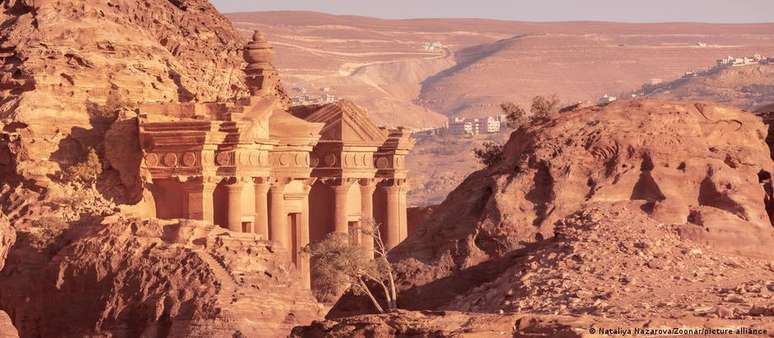Stone Town in Jordan attracts tourists and researchers. After centuries, the legendary place still holds many mysteries. Cultural Heritage of Humanity by Unesco, Petra, despite being famous throughout the world, still holds many secrets. Archaeologists and researchers from various disciplines are still working today trying to unravel the mysteries of the ancient stone city, located in Jordan.
Discover five interesting facts about Petra, which is considered one of the seven wonders of the modern world:
1. Petra was green
Ancient sources describe Petra as a green city with no shortage of water. And this, despite the fact that Petra was already in the middle of the desert in its heyday (from about 200 BC to AD 100). An ingenious system was devised to supply the city of about 260 square kilometers with the few available water supplies.
This water resource management could hide important knowledge for today, as many regions of the world will face droughts and water scarcity in the future. Currently, a team of experts from the University of Cottbus-Seftenberg is studying the urban development of Petra. Researchers recently found a large water tank that, among other things, fed a well-preserved cistern.
2. Petra is more than a rock-cut mausoleum
Petra was located at the crossroads of several caravan routes, connecting Syria and southern Arabia with the Mediterranean Sea. The Nabataeans were a nomadic people until they settled in the 3rd century BC in the city region. Thanks to its monumental mortuary temples carved directly into the rock, the city in southern Jordan is unique and, since 1985, Unesco has classified it as a World Cultural Heritage.
Unlike Petra’s famous sculpted facades, the best known of which are the Siq Gorge and Al Khazneh – the Treasury House, much of the architecture of the city center has not yet been thoroughly studied. But that should change soon. Since March, a team from the University of Cottbus-Seftenberg has been taking measurements in southwest Petra. Tourists are also advised to spend more than one day there.
3. The European who put Petra back on the map
After more than 1,200 years of thinking the fabled oasis-city was lost, Swiss traveler Johann Ludwig Burckhardt (known internationally as John Lewis) stumbled upon the ruins of the rock city in 1812 on his way from Damascus to Cairo. Based on the sources, he was trying to find Petra, causing distrust among the locals.
Under the guise of having promised to sacrifice a goat at Aaron’s tomb, located four kilometers from Petra, Burckhardt was finally able to make a multi-day tour of the ruins. His travel reports were published between 1819 and 1831 in English by the British African Association.
More than 100 years later, Thomas Edward Lawrence (better known as Lawrence of Arabia) wrote in The Seven Pillars of Wisdom: “Petra is the most magnificent place in the world.” Archaeological exploration of the ruins began in the 1920s and continues today.
4. More curse than blessing?
Also known as the city of the dead, Petra quickly opened its doors to tourism. The business, however, has ended up becoming a problem as it approaches the one million visitor mark a year. The site is on the list of World Heritage Sites in Danger by the World Monument Fund (WMF), an organization that works to preserve important cultural sites and monuments.
5. Mystery of the name
By the way, Petra is the Greek name for the rock city. The Nabataeans, certainly, call it in another way: a testimony indicates it for the name of Rakmu (colored, red). In the Old Testament it is called Sela (cliff, rock). His real name to this day has not been clarified beyond doubt. Thus, the stone city holds some mysteries in its name.
Source: Terra
Rose James is a Gossipify movie and series reviewer known for her in-depth analysis and unique perspective on the latest releases. With a background in film studies, she provides engaging and informative reviews, and keeps readers up to date with industry trends and emerging talents.






